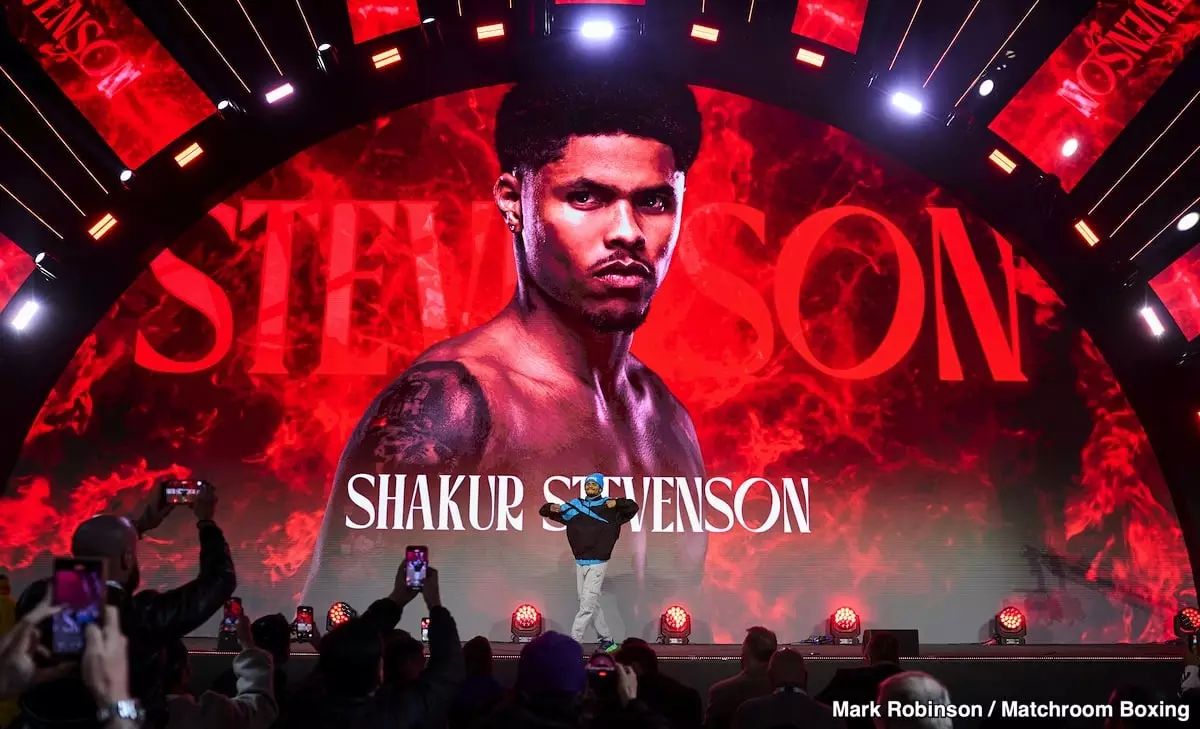Boxing has historically been a sport where the allure of knockout punches and dramatic fights captures audiences. However, as Tim Bradley asserts, the modern perception of what constitutes an exciting fight is undergoing a radical transformation—largely fueled by the influx of mixed martial arts (MMA) and the rapid consumption of content through social media. Shakur Stevenson, a fighter with a keen strategic mind, epitomizes the new breed of boxers who prioritize skill and defense over sheer aggression. This shift has polarized viewers, particularly among younger fans who seem to gravitate towards more explosive, frenetic styles of combat.
This division is not merely a reflection of taste; it’s symptomatic of broader changes in how entertainment is consumed. With the rise of tech-driven cultures and shorter attention spans, the anticipation for thrilling bouts necessitates style over substance. Fans want to be entertained. They crave the visceral excitement of knockouts and dramatic exchanges rather than the subtleties of defensive mastery and tactical prowess that fighters like Stevenson bring to the ring. The sweet science that has historically governed boxing is at odds with the contemporary desire for spectacle, and Stevenson’s skill set, while impressive, is increasingly sidelined in favor of more bombastic fighters.
The Dynamics of Audience Expectations
Boxing promoters face the challenge of catering to these evolving audience expectations. The financial stakes are high; networks deliberately shy away from fighters who fail to excite. Tim Bradley’s comments reveal that audiences have become more discerning, and their tolerance for less action-packed bouts is dwindling. This leads to an interesting dilemma for fighters like Stevenson, who embody the technical “hit-and-not-get-hit” philosophy but find themselves maligned for “boring” performances.
For instance, Stevenson managed to maintain an unbeaten record of 23-0, but the perception of him as a fighter becomes fragmented when juxtaposed with the allure of knockouts or adrenaline-fueled scrambles. The fact that he was booed in recent fights points to the harsh reality that even skilled fighters can be marginalized if they do not conform to the explosive expectations set by fans. This is a crucial moment for boxing as it confronts the complex relationship between artistry and entertainment.
The Impact of Social Media and Cultural Shifts
The landscape of sports, particularly boxing, has morphed under the influence of social media platforms where star power is built almost overnight. Stevenson’s constant engagement on platforms like X comes off as an attempt to garner public interest, but this lets him appear as a “textbook narcissist” in the eyes of critics. Unlike fighters from previous generations who relied more on their achievements in the ring to promote themselves, today’s athletes have to navigate public personas carefully, balancing their boxing identities with entertainment values that can often seem superficial.
Bradley’s remarks suggest a generational clash—where older fans may appreciate the technical aspects of boxing, younger audiences are clamoring for knockout artistry. It’s an irony that fighters who refuse to engage in brawls are seen as unworthy, even as they display athleticism and strategic finesse that requires years of practice. This cultural shift may also reflect an era where instant gratification reigns supreme; if a fight doesn’t deliver immediate thrills, it’s often relegated to the “boring” category.
A Call for Re-evaluation
As boxing continues to evolve, it’s essential that audiences recognize the richness of the sport beyond mere knockouts. Tim Bradley’s insights highlight a significant challenge: the need to bridge the gap between the technical mastery of fighters like Stevenson and the entertainment desires of the public. This doesn’t mean that we need to diminish the quest for excitement in fights, but rather, promote an appreciation of the different styles that define modern boxing.
The issue at hand is multifaceted; promoters, broadcasters, and fans must engage in a re-evaluation of what makes boxing captivating. This might involve storytelling that emphasizes the nuances of technique while celebrating the moments of drama. For fighters like Stevenson, the path forward could involve adapting how they present themselves both in and out of the ring, while challenging fans to embrace the broader spectrum that boxing offers.
Ultimately, the sport of boxing must accommodate evolving tastes while remaining true to its roots. As Stevenson and others like him navigate this treacherous terrain, it is the responsibility of fans and commentators alike to cultivate an appreciation for the diverse narratives that boxing has to offer.

